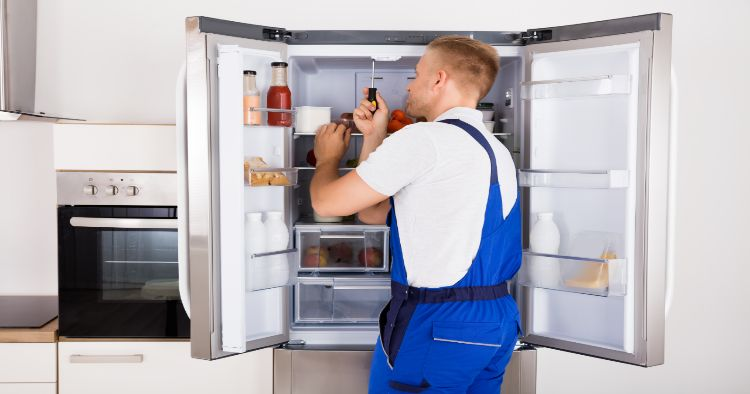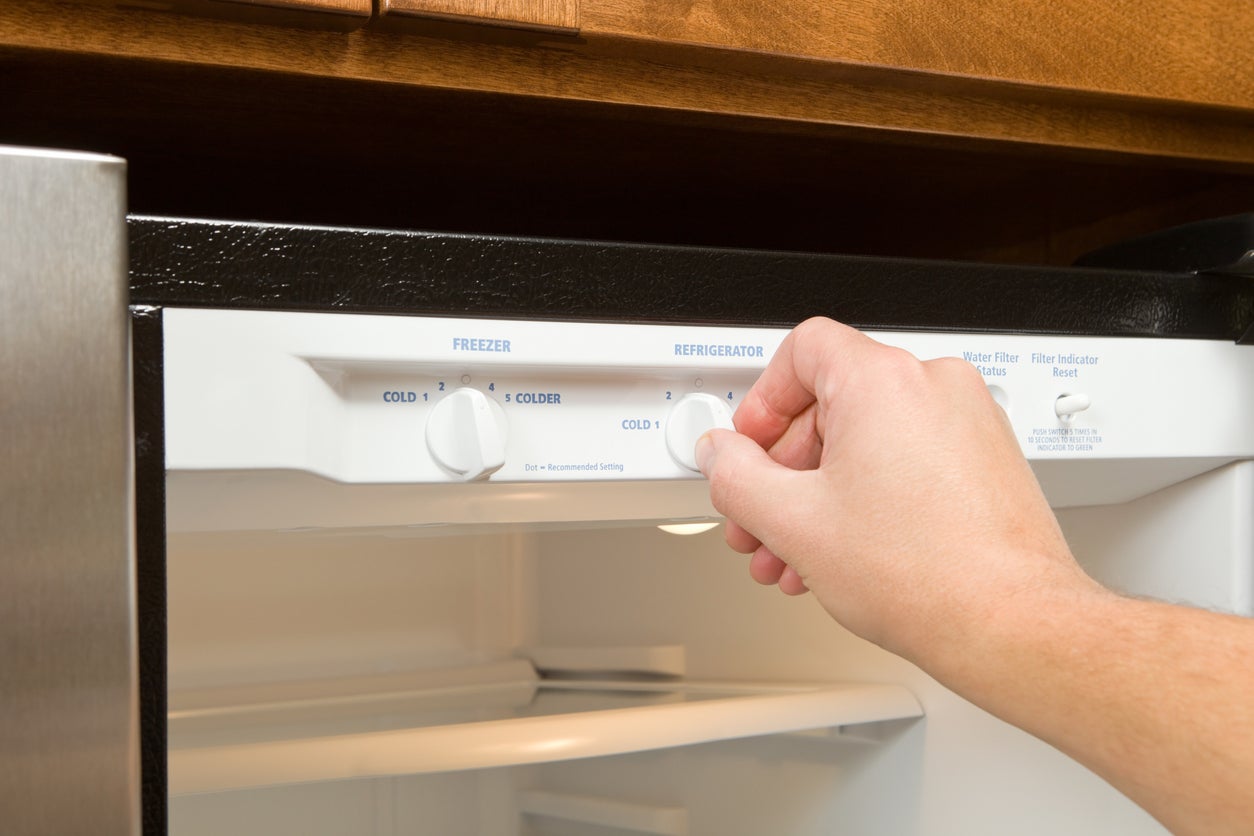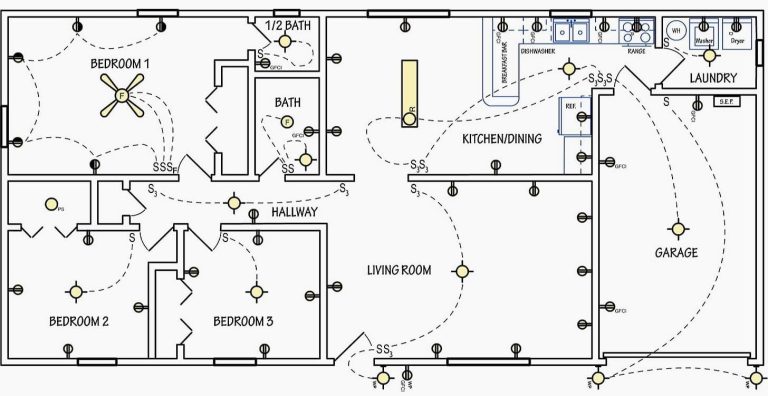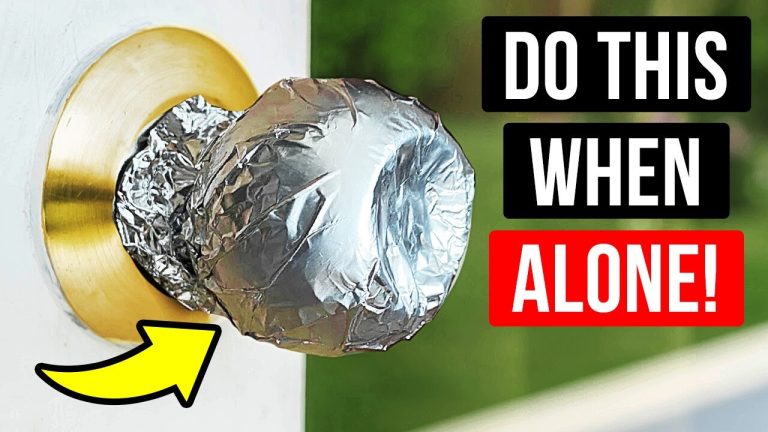Why Is My Fridge Not Cold Enough But Cooling?
If your refrigerator is not cold enough but is still cooling, there could be a few possible explanations. It is important to address this issue quickly as a warm fridge can spoil food and cause other problems. Common causes of this issue include an oversized refrigerator, a blocked air vent, an old or malfunctioning thermostat, and a faulty compressor. Additionally, if your refrigerator is recently installed or moved, it may take some time for it to cool down properly. It is important to investigate the problem and take the necessary steps to fix it.
Identifying the Problem
When your refrigerator fails to reach the desired temperature, it can be a cause for concern. In most cases, the problem is usually due to a malfunctioning compressor, inadequate airflow, or a dirty condenser coil. To diagnose the issue, there are several things you can do.
First, check the temperature settings. If the thermostat is set too low, it won’t be able to cool the contents inside. If the temperature is too high, the compressor will cycle on and off more frequently than necessary, resulting in an inefficient cooling system.
Next, check for any obstructions blocking the air vents. If the refrigerator is not receiving enough cool air, it will struggle to reach its desired temperatures. Additionally, make sure the evaporator fan is running properly and that the condenser coils are clean. If these parts are dirty, they won’t be able to dissipate heat as efficiently.
Finally, inspect the compressor for any signs of damage. If the compressor is not functioning properly, it won’t be able to circulate the coolant throughout the system. If the compressor has stopped working, you should contact a qualified technician to repair or replace it.
In conclusion, diagnosing a refrigerator that isn’t cooling correctly can be difficult. That is why it is important to check the temperature settings, look for obstructions, and inspect the compressor and condenser coils. If you need help, contact a qualified technician for assistance.
Possible Causes of a Cooling Refrigerator
When it comes to cooling problems with refrigerators, many potential causes can be behind the issue. Before you start troubleshooting, it is important to remember that the temperature of a refrigerator should be set at or below 40°F (4°C). Any temperature above this can cause food to spoil and bacteria to grow.
So why is your fridge not cold enough but still cooling? Here are three possible causes:
1. Faulty Thermostat – If the thermostat on your refrigerator is broken or faulty, it can cause the fridge to not cool properly. To check if this is the issue, you can turn the thermostat up or down and see if the refrigerator responds accordingly.
2. Dirty Coils – Refrigerator coils can get clogged with dust, lint, or pet hair, preventing the refrigerator from cooling properly. To clean the coils, unplug the refrigerator and use a vacuum cleaner or a long brush to remove the debris.
3. Blocked Air Vents – If the air vents on the back of the refrigerator are blocked or clogged, the cold air won’t be able to circulate and the refrigerator won’t cool properly. To fix this issue, simply remove any objects blocking the vents and make sure they are clean and clear.
These are just some of the possible causes of a cooling refrigerator. If none of these solutions fix the problem, you likely have a more serious issue that needs to be checked by a professional.

Credit: www.homeserve.com
Troubleshooting the Issue
For many people, a fridge not cooling properly seems like a major issue. But, fortunately, this isn’t always the case. Before calling a repair service, there are a few things you can do to troubleshoot the issue.
First, check the temperature setting on the refrigerator and make sure it is set to a cold enough temperature. If it’s set too low, the fridge may not be able to keep up with the demand. If the temperature is set correctly, check the condenser coils for any blockages or dust build-up, as this can reduce the cooling efficiency.
Next, take a look at the door seals. If they are damaged, air can escape and cause the temperature inside the fridge to rise. If the seals are in good condition, try adjusting the fan speed or increasing the airflow inside the fridge. This can help to reduce the temperature inside the fridge.
Finally, check the temperature control system. If it’s not working properly, it can cause the fridge to not cool properly. If the system is broken, it should be replaced.
These are just a few of the possible causes of a fridge not cooling properly. If none of these solutions work, it might be time to call a professional repair service. With their help, you can get your fridge back up and running in no time.
Investigating the Refrigerator’s Temperature
Troubles
When your refrigerator isn’t keeping your food sufficiently cool, it can be a major hassle. But before you call the repair service, it’s important to determine why your fridge isn’t cold enough but still cooling. Understanding the underlying problem can help you get to the root cause and make the necessary repairs yourself.
The most common causes of temperature issues in a refrigerator are either a faulty thermostat, a blocked air vent, or a malfunctioning condenser coil. The thermostat may be set too low, preventing the refrigerator from reaching its desired temperature. If the air vent is blocked, the cold air produced by the refrigerator will not be circulated properly throughout the unit. Finally, if the condenser coil is malfunctioning, the refrigerator may not be able to generate a sufficient amount of cold air.
If you suspect any of these issues, the first step is to check the thermostat settings. If the settings are correct, move on to inspecting the air vent and condenser coil for any obstructions or damage. If you find any debris or damage, it’s important to clean or repair them to ensure that the refrigerator can operate properly.
If none of these solutions work, you may need to replace the thermostat or other components of the refrigerator. Before attempting any repairs, it’s always important to consult a professional technician to ensure that the problem is identified and fixed correctly. Following these steps can help you avoid costly repairs and keep your refrigerator running at optimal temperature.

Cleaning the Refrigerator
Condenser Coils
Having a refrigerator that is not cold enough or not cooling at all can be an incredibly frustrating experience. One of the most common culprits of this issue is clogged condenser coils. A refrigerator condenser coil is responsible for absorbing the heat from the inside of the fridge and releasing it to the outside. When these coils become dirty or clogged, the heat can’t be removed from the fridge, resulting in a refrigerator that is not cold enough.
To keep the refrigerator performing at its best, it is essential to clean the condenser coils regularly. To do this, you will need to unplug the appliance and remove the bottom panel. Next, use a vacuum cleaner to clean the coils, ensuring you reach everyone. Finally, replace the bottom panel and plug the refrigerator back in.
Cleaning the condenser coils is a simple process that can help you avoid the frustration of a refrigerator that is not cold enough. Regularly cleaning the refrigerator coils is key to maintaining a well-functioning fridge.
Replacing Refrigerator Parts
Fridge troubleshooting can be a daunting task for homeowners, particularly when it comes to cooling issues. One common issue is when the fridge is not cooling enough, but still cooling. This is usually caused by a malfunctioning or broken refrigerator part, such as a thermostat, compressor, condenser fan motor, or evaporator fan motor.
Fortunately, replacing the broken part is usually an easy fix and can be done in a few steps. First, use a multimeter to test the defective part to see if it is still functioning. If not, you can purchase a new part and install it yourself. However, if you are not comfortable replacing the part yourself, it is best to contact a professional appliance repair technician for help.
It is important to note that replacing a broken part will not always fix the problem. If the fridge is still not cooling properly, the issue may be with the evaporator coils or condenser coils, which should be cleaned or replaced. In some cases, it may be necessary to replace the entire fridge.
Replacing refrigerator parts can be a simple and effective way to resolve cooling problems, but it is important to understand the cause of the issue before attempting to replace any parts. If you are unsure of what to do, contact a professional appliance repair technician for expert advice.
Testing and Adjusting the Temperature
Testing and adjusting the temperature in your refrigerator is the key to making sure it’s running as efficiently as possible. If you notice that the temperature inside your fridge is not cold enough, there are several things you can do. First, check the temperature settings on your fridge. Most models have an adjustable thermostat that allows you to set the desired temperature. If the setting is too low, you can increase the temperature by turning the thermostat knob slightly to the right. Additionally, you may want to check the vents of the fridge to make sure they aren’t blocked, as this can prevent the cold air from circulating properly. If the vents are blocked, simply remove any obstructions and the temperature should return to normal. Finally, if your refrigerator is too old or just isn’t cooling properly, you may want to consider replacing it with a newer model. All of these steps should help you get the right temperature in your fridge.
Preventing Future Problems
with Your Fridge
It’s a common question to ask, why is my fridge not cold enough but cooling? Unfortunately, the answer isn’t always simple. There could be several reasons why your fridge isn’t meeting your cooling needs. It could be a malfunctioning thermostat, dirty coils, blocked vents, or a failing compressor.
Fortunately, there are steps you can take to ensure that your fridge is working efficiently and effectively. Cleaning the condenser coils regularly will help keep your fridge running smoothly. Additionally, make sure the vents are clear of debris and dust, which can restrict airflow and cause your fridge to work harder. Finally, inspect the rubber door gasket and replace it if necessary, as a faulty seal can cause warm air to enter and affect the temperature inside the fridge.
By following these simple steps, you can help to prevent future problems with your fridge. Regular maintenance is essential to ensure that it is running efficiently and effectively. If the problem persists, contact a professional who can diagnose the issue and suggest the best course of action.
FAQs About the Why Is My Fridge Not Cold Enough But Cooling?
1. What should I check if my fridge is not cold enough but still cooling?
Answer: Check the temperature setting, ensure the doors are closing properly, check if the condenser coils need cleaning, and make sure the compressor is running.
2. How can I tell if my fridge is not cold enough?
Answer: Check the temperature inside the fridge and compare it to the temperature setting on the control panel. If the temperature inside the fridge is higher than the temperature setting, then your fridge is not cold enough.
3. What could be the cause of my fridge not cooling enough?
Answer: Potential causes of your fridge not cooling enough include a dirty or blocked condenser coil, a faulty thermostat, a faulty compressor, or a refrigerant leak.
Conclusion
There are many potential reasons why your fridge is not cold enough but still cooling. It could be due to a faulty thermostat, a dirty condenser coil, a malfunctioning compressor, or low levels of refrigerant. If you are unable to identify the problem yourself, you should enlist the help of a qualified refrigerator repair technician to help diagnose and repair the issue.







